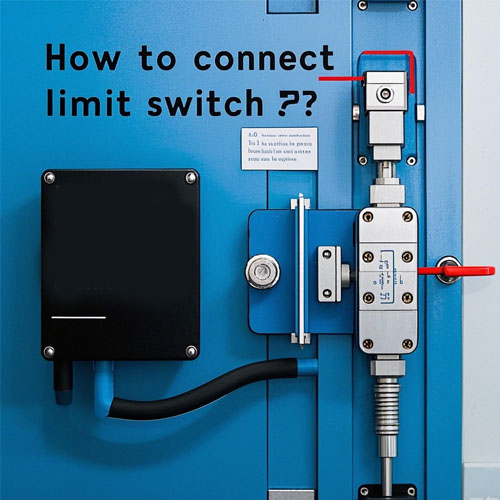A furnace limit switch is a safety device designed to monitor and protect the furnace from unsafe operating conditions. Its primary functions include:
• Temperature Control: It detects when the furnace’s internal temperature exceeds a preset safe limit (e.g., due to blocked vents or a malfunctioning heat exchanger) and shuts off the power or gas supply to prevent overheating, which could lead to equipment damage or fire hazards.
• Component Monitoring: Some switches check if moving parts like fans or dampers are properly positioned, ensuring all components work in sync to avoid mechanical failures.
• Safety Interlock: Acts as a fail-safe mechanism, triggering an automatic shutdown when anomalies are detected to protect both the furnace and users.
I. Why Furnaces Need Limit Switches
• Safety Compliance: Essential to meet safety standards (e.g., UL certification) by preventing fire, explosion, or overheating risks.
• Fault Prevention: Quickly halts abnormal operation to avoid minor issues escalating into major problems (e.g., a stuck motor causing temperature loss of control).
• Extended Lifespan: Reduces wear and tear on heating elements and circuits by protecting against overloads.
II. When to Replace the Limit Switch
Replace the switch if you observe:
• Failure to Act: It doesn’t trip at high temperatures or cuts off unexpectedly at normal temperatures, preventing the furnace from starting.
• Physical Damage: Cracked casing, loose terminals, or a deformed temperature-sensing probe.
• Frequent Malfunctions: The switch trips without overheating or resets only to fail again shortly, often due to worn-out components or parameter drift.
• Aging: As a wear-and-tear part, it degrades over time (typically replace every 5–10 years per the manufacturer’s manual).
III. How to Replace a Furnace Limit Switch
Tools & Prep:
• Tools: Screwdriver, multimeter (optional), insulating tape, and a new switch (match the original model’s voltage, current, and temperature rating).
• Safety First: Turn off the furnace’s power (via circuit breaker) and gas supply (for gas furnaces). Let the unit cool completely.
Steps:
1. Locate the Switch:
• Found near heating elements (e.g., heat exchanger, electric coils) or fans. It’s usually a plastic housing with a metal probe, connected to 2–3 wires. Refer to the manual or note the old switch’s position.
2. Remove the Old Switch:
• Unscrew the switch from its mount and remove any protective covers.
• Photograph or label wire connections (e.g., “COM,” “NO,” “NC”) to avoid confusion. Disconnect wires by releasing clips or unscrewing terminals.
• Take out the old switch and inspect the mounting bracket for damage.
3. Install the New Switch:
• Secure the new switch in the original position, ensuring the temperature probe aligns with the previous setup (e.g., pressed against the heat exchanger).
• Reconnect wires exactly as they were on the old switch. Tighten terminals firmly to prevent loose connections or shorts.
4. Test & Reset:
• Restore power and gas (check for leaks in gas furnaces). Some switches reset automatically; others require a manual reset button.
• Start the furnace and monitor its operation: The switch should trip at the rated temperature and reset when cooled. Use a multimeter to verify continuity during testing.
• If issues persist (e.g., no trip or instant shutdown), recheck wiring, probe placement, or consider other faults (e.g., a faulty fan causing overheating).
Notes:
1. Model Compatibility: Use the manufacturer-recommended part to match temperature thresholds and electrical specs—do not interchange incompatible models.
2. Professional Help: For complex systems (e.g., condensing furnaces, industrial units) or uncertainty with wiring, consult a certified technician to avoid safety risks.
Conclusion
The limit switch is critical for furnace safety. Regular checks and timely replacement when signs of failure appear are essential. Always prioritize safety by powering down the system and using correct parts. If unsure, seek professional assistance to ensure proper functionality and safety.









